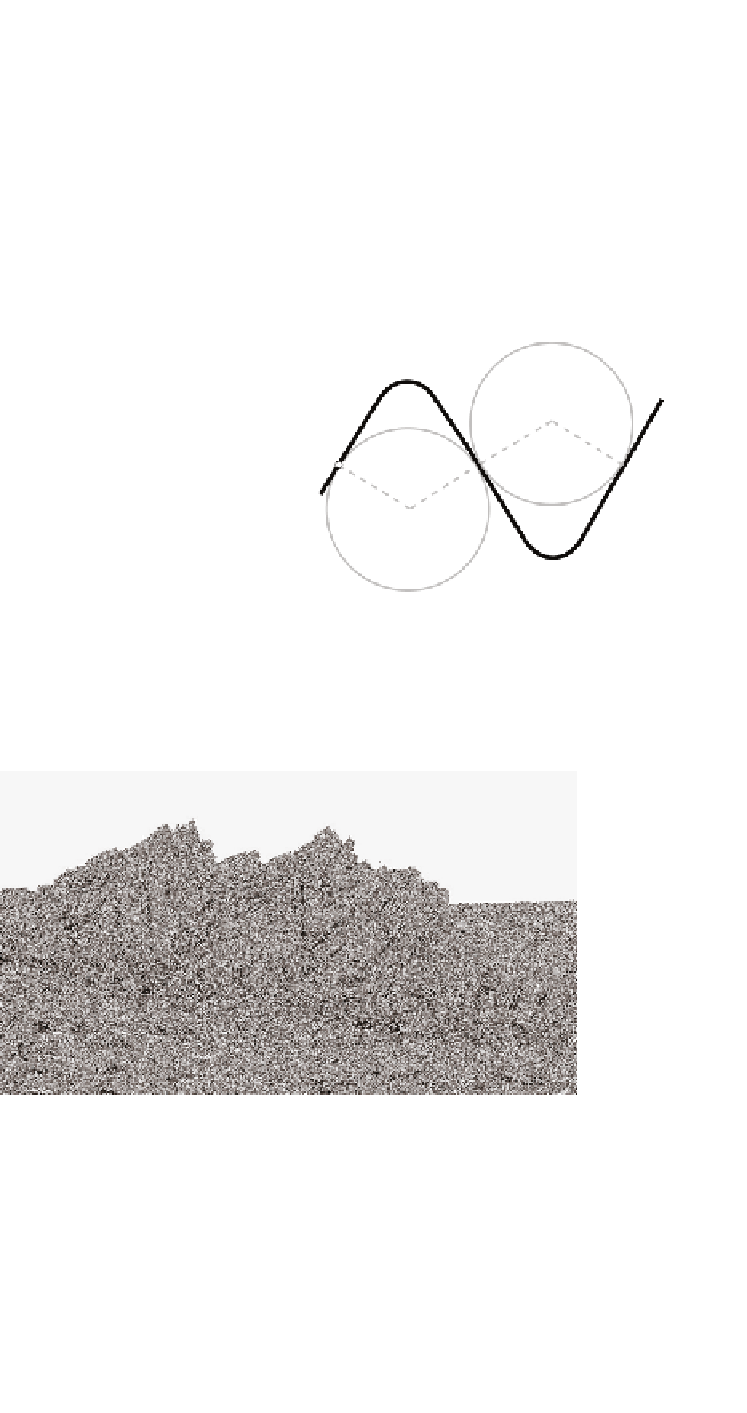Geoscience Reference
In-Depth Information
between strike-slip vertical faults. Transtensional areas
develop horsts with a gravitational or normal component
and are named normal or negative flower structures,
whereas transpressional contexts give way to horsts with a
negative component and the duplexes formed are called
reverse or positive flower structures.
4.16
Solid bending, buckling, and folds
Folds are wave-shaped deformations produced in rocks
and made visible by the deformation of planar structures
such as layering in sedimentary rocks, layering and
foliations in metamorphic rocks and in some igneous rocks
(Fig. 4.113). Folds are some of the best described tec-
tonic structures characteristic of ductile deformation.
Individual folds can be
antiforms
, when they are convex
up (A-shaped) or
synforms
, when they are concave up
(Fig. 4.114).
Anticlines
and
synclines
are terms that are
used to describe folds, but the meaning is quite different
to antiforms and synforms. To define anticlines and syn-
clines the age of the folded layers has to be known.
Anticlines are folds that have the oldest rock layers in the
fold core, concave side or inner part and the younger rocks
in the outer, convex surface. Synclines are folds that have
the opposite age distribution, such that the older rocks lie
on the convex layer and the younger in the inner concave
surface. Although in not very intensely deformed rocks, it
is common to have a coincidence between anticlines and
antiforms and syncline and synforms, when several fold-
ing phases occur and folds are superposed, the rocks can
experience overturning, leading to a reversal in strati-
graphic polarity; all four combinations are possible, with
the addition of antiformal synclines and synformal
anticlines.
Folds are usually arranged in fold trains in which there is
a succession of antiforms and synforms. The boundary
between adjacent folds is defined by the inflection points
in which the bend changes polarity or sense of curvature
(Fig. 4.115). As described in Section 4.15 folds can be
associated with thrust faults in orogenic settings in
thin-skin tectonic deformed areas, but also form in a
variety of other settings in the inner areas, as the meta-
morphic cores, of orogenic belts. Local formation of folds
Antiform
+
+
Synform
Fig. 4.114
Definition of curvature in a fold by locating a reference
circle tangent to the fold sides in a line that join the middle points of
the more straight parts of the fold.
Fig. 4.113
Folds are wave-shaped ductile deformations developed on layered rocks as these stratified sedimentary rocks.












Search WWH ::

Custom Search